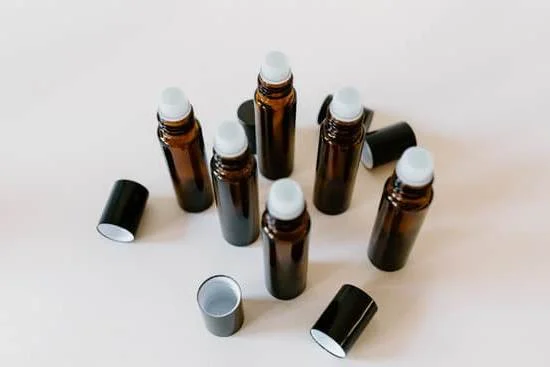Are you wondering how to make basil oil for aromatherapy? Basil oil has been widely recognized for its therapeutic properties in promoting relaxation and wellness.
In this article, we will explore the benefits of using basil oil in aromatherapy, how to select the right type of basil for oil extraction, the extraction process itself, as well as storing and preserving basil oil. Additionally, we will discuss safety precautions and considerations when using basil oil in aromatherapy, provide DIY recipes for creating aromatherapy blends, and offer further resources for continued learning.
Basil oil is a popular essential oil used in aromatherapy for its various healing benefits. It is known to promote relaxation and improve overall wellbeing through its soothing properties. When used in aromatherapy, basil oil can help alleviate stress and anxiety while also enhancing mental clarity and focus.
In addition to exploring the multitude of benefits associated with using basil oil in aromatherapy, we will also delve into the different types of basil available and how their unique properties can impact the quality of the extracted oil. We will also provide tips on selecting the best variety of basil for making your own homemade aromatherapy oil.
Benefits of Using Basil Oil in Aromatherapy
Basil oil is a highly versatile essential oil that has a wide range of benefits when used in aromatherapy. From its soothing properties to its ability to improve mental clarity, basil oil can be a valuable addition to any aromatherapy routine. In this section, we will delve into the physical and emotional benefits of using basil oil in aromatherapy, as well as how it can help alleviate stress and anxiety.
Physical Benefits
When used in aromatherapy, basil oil is known for its ability to relieve physical discomfort such as muscle tension and headaches. Its analgesic properties make it a popular choice for massage oils or diffuser blends aimed at reducing pain and inflammation. Additionally, basil oil has been shown to have antimicrobial and antioxidant effects, making it beneficial for supporting the immune system and promoting overall wellness.
Emotional Benefits
In terms of emotional benefits, basil oil is revered for its calming and uplifting effects on the mind and spirit. It is often used in aromatherapy to reduce feelings of anxiety and promote relaxation. The refreshing aroma of basil oil can also help clear the mind and improve mental focus, making it an ideal choice for those looking to enhance their cognitive function during work or study sessions.
Selecting the Right Basil for Oil Extraction
When it comes to making basil oil for aromatherapy, choosing the right type of basil is crucial in ensuring that you get the desired therapeutic benefits. Here are some different types of basil and their unique properties:
1. Sweet Basil (Ocimum basilicum): This is the most common type of basil used for oil extraction. It has a fresh, sweet scent with a hint of spice, and it is known for its calming and uplifting effects.
2. Holy Basil (Ocimum sanctum): Also known as Tulsi, holy basil has a warm, spicy aroma and is often used for its adaptogenic properties, which can help the body adapt to stress and promote mental clarity.
3. Lemon Basil (Ocimum × citriodorum): As the name suggests, this type of basil has a citrusy fragrance that can be energizing and refreshing. It is often used to uplift moods and reduce mental fatigue.
When selecting the right basil for making aromatherapy oil, consider the specific therapeutic properties you are looking for. Once you have chosen your preferred type of basil, here are some tips on how to procure it:
– Check your local plant nursery or farmers’ market for fresh basil plants.
– Consider growing your own basil at home to ensure quality and sustainability.
– Look for organic or pesticide-free options to avoid any unwanted chemicals in your oil extraction process.
By carefully selecting the right type of basil for oil extraction, you can enhance the effectiveness of your aromatherapy blends and enjoy a truly personalized experience that caters to your specific needs.
Now that we have outlined how to select the right type of basil for making aromatherapy oil, let’s proceed with learning about the extraction process and how to create your own homemade basil oil.
The Extraction Process
Step-by-Step Guide to Extraction
To make basil oil for aromatherapy, there are several methods of extraction that can be used. One popular method is steam distillation, which involves using steam to extract the essential oil from the basil leaves. Another method is cold pressing, where mechanical pressure is used to squeeze the oil out of the basil. Whichever method you choose, the first step is to gather fresh basil leaves and ensure they are clean and free from any dirt or debris.
For steam distillation, place a heat-resistant bowl at the bottom of a large pot and fill it with water. Add the basil leaves to the water and allow them to steep as the water heats up. As the steam rises, it will carry the essential oil from the basil leaves into a condensation chamber where it can be collected.
If using the cold press method, place the clean basil leaves in a press and apply gentle pressure to release the essential oil. This method is simpler than steam distillation but may require more plant material to produce an equivalent amount of oil.
Optimizing Oil Quality
Regardless of which extraction method you use, it’s important to take steps to optimize the quality of your basil oil for aromatherapy. Ensure that you are using fresh basil leaves that have not wilted or started to decay, as this can affect the scent and therapeutic properties of the oil. It’s also crucial to monitor temperature and pressure during extraction, as excessive heat or force can degrade the quality of the oil.
After extraction, it’s recommended to filter out any plant material or impurities from your final product. This can be done using a fine mesh strainer or cheesecloth. Once your basil oil is free from impurities, store it in a dark glass bottle in a cool, dark place away from direct sunlight and heat sources. This will help preserve its potency and extend its shelf life for use in aromatherapy applications.
Storing and Preserving Basil Oil
When it comes to creating basil oil for aromatherapy, it’s vital to consider how to store and preserve the oil to maintain its quality and potency. Here are some important tips for storing and preserving your homemade basil oil:
- Use dark glass containers: When storing basil oil, it’s crucial to use dark glass containers, such as amber or cobalt blue bottles. This helps protect the oil from light exposure, which can cause it to degrade over time.
- Store in a cool, dark place: Basil oil should be stored in a cool, dark place away from direct sunlight and heat sources. A pantry or cabinet is an ideal location for storing the oil.
- Airtight seal: Ensure that the container used for storing basil oil has an airtight seal to prevent air from entering and oxidizing the oil.
In addition to proper storage containers and conditions, there are specific measures you can take to extend the shelf life of your basil oil for aromatherapy:
- Add a few drops of vitamin E: Adding a few drops of vitamin E to the basil oil can act as a natural preservative and help prolong its shelf life.
- Avoid moisture exposure: Keep the container tightly sealed at all times to prevent moisture from getting into the oil, which can cause mold growth and spoilage.
- Labeling and date: Properly label your basil oil container with the extraction date so that you can keep track of its shelf life. It’s recommended to use up the oil within six months to one year for optimal freshness.
By following these storage and preservation methods, you can ensure that your homemade basil oil retains its therapeutic properties for use in aromatherapy applications.
Now that you have learned how to properly store and preserve basil oil for aromatherapy, you are ready to explore different ways of using this fragrant essential oil for relaxation, stress relief, mental clarity, and overall wellbeing.
Safety Precautions and Considerations
When working with essential oils like basil oil for aromatherapy, it is crucial to prioritize safety and be aware of potential risks. Before using basil oil for aromatherapy, it is important to conduct a patch test to check for any allergic reactions. To do this, dilute a small amount of basil oil in a carrier oil and apply it to a small area of skin, then wait 24 hours to observe any adverse reactions.
Another important consideration is the proper dilution of basil oil before applying it to the skin. Basil oil is highly concentrated and should always be diluted with a carrier oil such as coconut, almond, or jojoba oil before being used topically. The general rule of thumb for dilution is about 2-3 drops of basil oil per teaspoon of carrier oil.
It’s also essential to store basil oil properly in a cool, dark place away from direct sunlight and heat sources. This will help preserve the quality and potency of the oil over time.
| Safety Precautions | Considerations |
|---|---|
| Prioritize safety when using essential oils | Conduct patch test before use |
| Dilute essential oils properly | Store basil oil in cool, dark place |
DIY Basil Oil Aromatherapy Recipes
Basil oil is a versatile and popular essential oil that is prized for its numerous health benefits. One of the most common uses of basil oil is in aromatherapy, where it can be used to promote relaxation, reduce stress, and improve overall wellbeing. In this section, we will explore some easy-to-follow DIY basil oil aromatherapy recipes that you can create at home to enjoy the therapeutic benefits of this wonderful essential oil.
One simple recipe for a basic basil oil aromatherapy blend involves mixing 5-7 drops of basil oil with 1 ounce of carrier oil, such as sweet almond or coconut oil. This blend can then be used for massage, added to bathwater, or used in a diffuser to create a calming and uplifting atmosphere. The soothing aroma of basil oil can help ease tension and anxiety while promoting mental clarity.
For those looking to enhance their focus and concentration, a blend of basil oil with other stimulating essential oils like rosemary or peppermint can be beneficial. Use 3-4 drops each of basil, rosemary, and peppermint oils in a diffuser or inhale directly from the bottle to sharpen mental alertness and improve cognitive function.
If you’re dealing with respiratory issues or seasonal allergies, basil oil can be combined with eucalyptus and tea tree oils for an effective decongestant blend. Add 3-4 drops each of basil, eucalyptus, and tea tree oils to a bowl of hot water for steam inhalation to clear sinuses and relieve congestion.
These are just a few examples of how you can use basil oil in aromatherapy blends at home. Experiment with different combinations and applications to find the right recipe that suits your individual needs and preferences. By creating your own DIY aromatherapy blends with basil oil, you can harness its powerful healing properties for improved emotional and physical wellbeing.
Conclusion and Further Resources
In conclusion, basil oil has proven to be a valuable addition to the practice of aromatherapy due to its wide range of physical and emotional benefits. From promoting relaxation and mental clarity to alleviating stress and anxiety, basil oil offers a natural solution for enhancing overall wellbeing. Whether used in massage oils, diffusers, or homemade skincare products, basil oil can be easily incorporated into daily self-care routines.
For those interested in harnessing the power of basil oil for aromatherapy, it is important to select the right type of basil for extraction and to follow proper safety precautions when using the oil. Additionally, understanding the various methods of extraction and proper storage techniques are crucial for maintaining the quality and potency of the oil over time.
By following these guidelines and with a bit of experimentation with DIY recipes, anyone can enjoy the benefits of basil oil in their aromatherapy practices.
For further resources on using basil oil for aromatherapy, there are many books, websites, and online courses available that delve deeper into its uses and applications. It is recommended to explore these resources in order to gain a more comprehensive understanding of how to make basil oil for aromatherapy and how it can be effectively integrated into holistic wellness routines. With the right knowledge and guidance, anyone can experience the healing properties of basil oil in their own home.
Frequently Asked Questions
How Do You Make Basil Essential Oil at Home?
To make basil essential oil at home, you’ll need fresh basil leaves, a carrier oil like olive or coconut oil, and a glass jar. Begin by bruising the basil leaves to release their oils, then cover them with the carrier oil in the jar.
Let the mixture sit in a warm location for a few weeks, shaking it occasionally. After this time, strain out the basil leaves and you’ll have homemade basil essential oil.
How Do You Make Basil Fragrance Oil?
Making basil fragrance oil is a simpler process than creating essential oil. You can infuse fragrance into a carrier oil of your choice using dried basil leaves.
Add the dried leaves to the carrier oil and let it sit for about a week in a cool, dark place. Strain out the dried leaves, and your homemade basil fragrance oil is ready to use.
What Is the Best Carrier Oil for Basil Essential Oil?
The best carrier oil for basil essential oil is argan oil due to its ability to nourish and moisturize the skin without clogging pores. Argan oil is rich in vitamin E and fatty acids, making it an ideal carrier for diluting basil essential oil before applying it topically.
Its light texture also allows for easy absorption into the skin, ensuring that the benefits of both oils are effectively delivered.

Are you looking for a natural way to improve your health and wellbeing?
If so, aromatherapy may be the answer for you.





